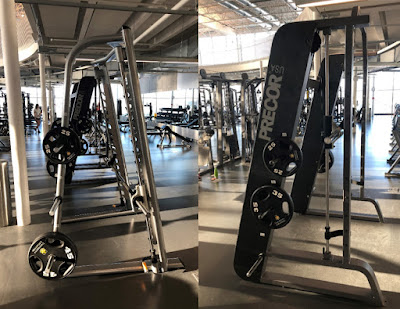Why Is Resistance Training Important?
by Andrea Dietrich, B.Kin., CSEP-CPT
Fitness and Training Coordinator, Recreation Services at the University of Manitoba
Resistance training (also known as strength training or weight training) is a broad term that denotes any activity that requires you to work against a resistance such as gravity, body weight, bars or dumbbells, or machines. While this article will discuss resistance training as a planned set of exercises during a focused session of activity, resistance training also has a sneaky way of working itself into one’s everyday life, which is why it is so important. Basic tasks such as picking up your pet or child, carrying in groceries, preventing a slip on the ice, or even getting up out of the tub all depend on having the muscular strength and endurance to perform these actions.
Many people know they should be doing more during their workouts than just focusing on lengthy cardio sessions, but maybe do not understand why it is so important or how it can affect their health and wellbeing. Research shows that through resistance training, gains in muscular strength, muscular power, balance, and coordination can happen. Additionally, body fat can decrease as lean muscle mass increases, decreased incidents of low back pain are reported, and resistance training can also reduce the rate of bone loss as we age.
Yes, you heard right: as we age, we begin to lose bone. This is compounded if you live with osteoporosis or take medications that impact bone loss. The rate of bone loss is also greater in women post-menopause. What is more is that we cannot recover lost bone mass, we can only slow the rate of which it occurs. That is why resistance training is so important, especially in women and the elderly.
So how does making stronger muscles make for stronger bones? Your muscles are actually attached to your bones, so as you demand more from your muscles, the bone has to learn to endure the pulling forces acted upon them. By gradually building up your muscles, you also gradually diminish bone loss in order for your frame to provide structural support.
Incorporating resistance training is easy and can be done at the gym or at home. You can rely on your own body weight if you do not have access to equipment. Better yet, take your workout outside to a neighbourhood playground! If you prefer the gym setting but have questions about our equipment, our Fitness Attendants are more than happy to help you.
Is resistance training right for everyone? For most of the population resistance training is safe and encouraged. The Canadian Society for Exercise Physiology recommend 2-3 sessions per week for both adults and older adults of muscle strengthening activity. If you are looking for safe and easy ways to start adding resistance training into your routine, Recreation Services offers a large variety of group fitness classes. If you are interested in more one-on-one training with a certified professional, we offer personal training & assessment services at reasonable rates.
References:
Maddalozzo, Gianni & Snow, C.M.. (2000). High Intensity Resistance Training: Effects on Bone in Older Men and Women. Calcified tissue international. 66. 399-404. 10.1007/s002230010081.




Comments
Post a Comment